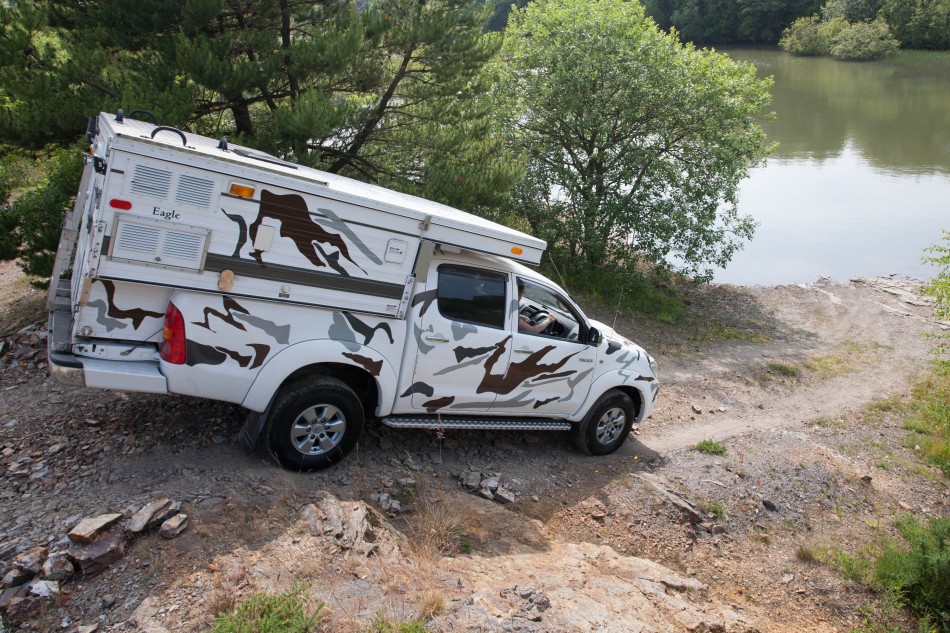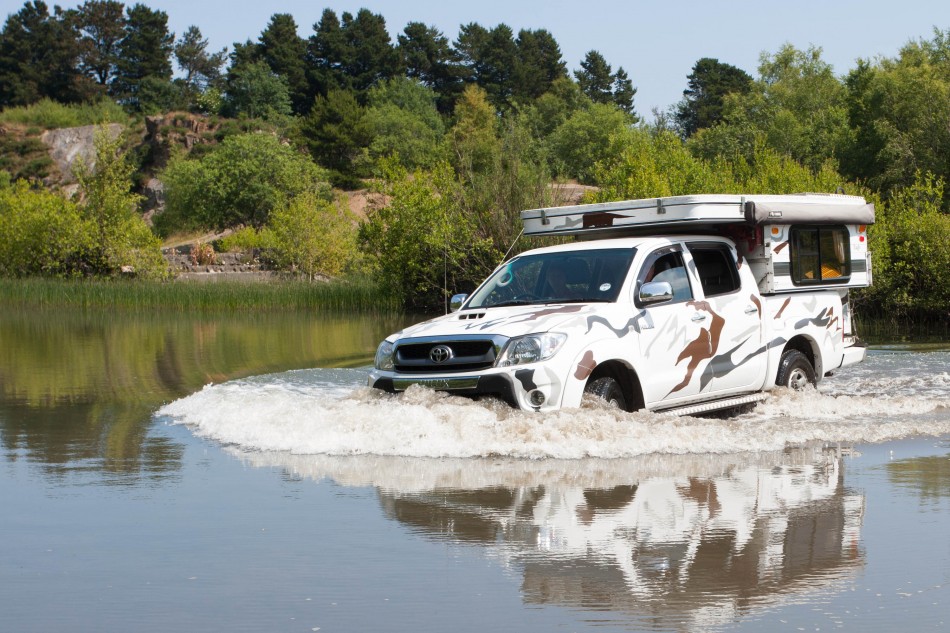Sometimes we shall need to reach remote areas of the Andes to film and photograph its wildlife. The landscape of Chile and Argentina is tough and unforgiving, glaciers, rainforests, deserts all connected by wild and rugged roads and tracks. Personal safety is at the top of our list. Pre-expedition planning is vital to our success and so several months ago we booked ourselves onto a 4×4 driving course, tutored by the experts, the men who trained Ben Fogle as well as the Top Gear presenters. Yesterday was the day that we arrived at the Motor Safari training ground near Chester, they put us and our Toyota Eagle through its paces and what a great day we had.
Here are a few of the tips we learnt ……….
When taking an expedition vehicle on descents, walk it first, looking for potential difficulties such as rocks & ruts and plan the route. Align the vehicle straight and ensure you are in the lowest 4 wheel gear. If you cannot see the ground beneath you, don’t panic, take an initial marker way in front and keeping the steering wheel level proceed with your foot off the brake, we did this and our Hilux did the work for us, slowly and safely.
Driving across rivers is not normal for us in Leicestershire, so knowing what to do when we just happen across a mountain torrent was something that had drifted in and out of recent sleepless nights.
The best thing to do if possible is to try to walk it first, that way you can feel the bottom with a stick and feel the strength of any flow, if you start to float away, forget it and retrace your steps. Either way, doing this will increase the likelihood of making a safe crossing.
I always thought that the source of air into our vehicle came through an open window. Where the air came from to cool the engine was a thought I had never had, I always expected engines to be cool, sudden combustion was something I’d expected to be ironed out years ago. So imagine our surprise to find out that the Hilux air intake is situated fairly high under the front wing, drivers side. Suddenly we started feeling much better. However you ought not to cross water that is higher than a pair of wellington boots, approx 40 cms. The exhaust is important, ensure it does not fill with water. Use a low gear such as L2 on the Hilux and drive in a meaningful way, do not stop, keep going, you are likely to create a bow wave, that is OK and expected, your motion will push it away. When you are safely on dry ground it is best to check the air filter. The brakes will make a noise for a while, don’t worry that’s normal. Should you for any reason stop in the water do not keep turning the ignition key as you will flood the engine. If you have to get out of the vehicle in water do so THROUGH THE WINDOW, do not open the doors, unless you want fish for tea and a ‘write-off’ claim to your insurers. Still water such as lakes are more dangerous than rivers as they are likely to have muddy bottoms, or may be deep, take great care.
During the hard days training we were taken through a wide variety of backcountry driving skills, assessing dangers, understanding the capabilities of our unique vehicle, maintenance tasks and vehicle recovery. At the end of the day we felt more confident in our driving capabilities moreover we have been alerted to things we need to sort out on the vehicle and some emergency kit to buy.



